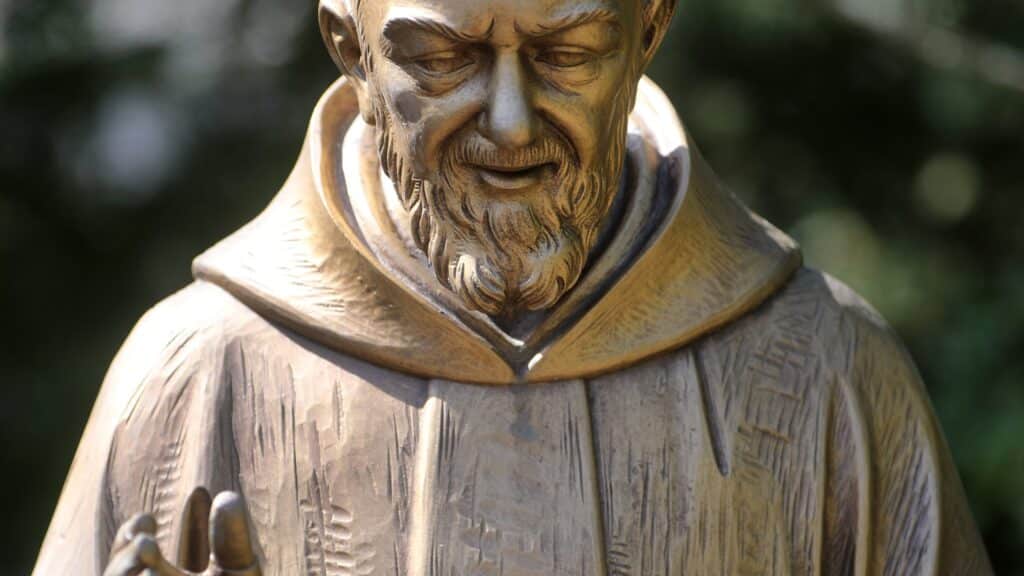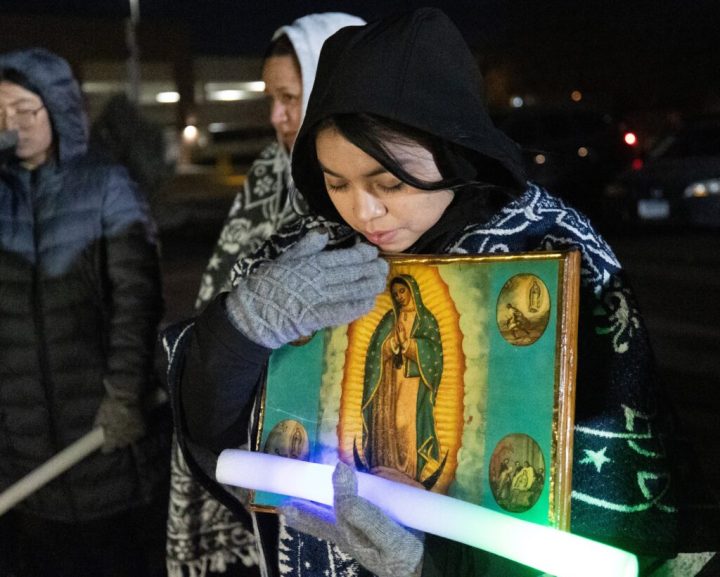
(OSV News) — A beloved Italian saint is speaking to faithful anew through a series of letters sent directly to their email inboxes.
The St. Pio Foundation has announced the release of “Epistolary,” a collection of 365 letters written by St. Pio of Pietrelcina, widely known as Padre Pio, to his spiritual directors and students. A dedicated page on the foundation’s website includes a sign-up form (available at saintpiofoundation.org/saint-pios-epistolary) for receiving a weekly PDF with seven letters, one for each day of a given week. The first batch of letters was sent out Jan. 1 by the Tuckahoe, New York-based foundation.
Freshly translated into English from the original Italian, the Epistolary represents a fraction of the “thousands and thousands of letters” Padre Pio wrote during his lifetime, Luciano Lamonarca, founder and CEO of the St. Pio Foundation, told OSV News.
Born Francesco Forgione in 1887 in Pietrelcina, Italy, the future saint entered the Capuchin order at age 15 and was ordained in 1910. Between 1915 and 1918, he served intermittently in the Italian Army’s medical corps during World War I, but was ultimately discharged due to poor health. He returned to his monastery at San Giovanni Rotondo in southern Italy, and in 1918 received the Stigmata (the wounds of Christ), the first priest to receive such marks in the history of the Catholic Church.
Amid sustained physical and spiritual suffering — compounded by austerity and long hours of prayer — he established Casa Sollievo della Sofferenza, now a renowned national research hospital located in San Giovanni Rotondo. The Capuchin also devoted himself to the healing of souls, often spending more than 15 hours a day hearing confessions. Padre Pio died in 1968 and was canonized in 2002 by then St. John Paul II, with whom he had been friends since 1947.
The Capuchin’s voluminous correspondence was a ministry unto itself, imparting encouragement, fatherly corrections and commonsense spirituality centered in an intensely personal relationship with Christ.
“If God has not abandoned you in the past, how would he abandon you in the future when now, more than in the past, you want to belong to him from now onwards?” wrote Padre Pio to Antonietta Vona, one of his “spiritual daughters,” in November 1917. “Do not fear that something bad could happen to you in this world because it may never happen to you. But, in any case, should this ever happen to you, God will give you the strength to overcome it.”
At the same time, Padre Pio’s writings reveal his own struggles with spiritual dryness.
“I’m alone in the day, I’m alone during the night and no ray of light comes to shine on me, never a drop of refreshness comes to put off the flame that engulfs me continuously without ever consuming me,” he admitted in a 1916 letter to his superior, Capuchin Father Benedetto of San Marco in Lamis, who would later attest to Padre Pio’s reception of the stigmata.
With the Epistolary, Padre Pio’s ministry of spiritual counsel continues — and faithful have been eagerly waiting, said Lamonarca.
“I always find people around the (U.S.), when I travel with the relics (of Padre Pio) especially — they’re very demanding (about access to the letters, asking), ‘How can we get all that? It’s difficult to find.’”
Lamonarca told OSV News the Epistolary is one of several “gifts” he wanted to give to the Catholic community to mark the foundation’s upcoming 10th anniversary in April.
But the gifts he has received from his own devotion to the saint have been life-changing, he added.
A native of the Puglia region in southern Italy, Lamonarca — an opera singer and philanthropist — was accustomed to visiting the saint’s shrine there as a child with his mother and brother.
But in 2014, that childhood devotion took on a profound dimension, as Lamonarca and his wife, Valentina, experienced what they consider a miracle through the saint’s intercession: the conception and birth of their 8-year-old son, Sebastian.
The couple had lost their first child, Alma, to stillbirth in 2010. Surgeries to address complications from the delivery made future pregnancies highly unlikely.
Devastated, the Lamonarcas traveled to San Giovanni Rotondo, spending their wedding anniversary there and visiting Padre Pio’s shrine to implore the saint for a sign they would someday become parents. While there, they venerated a relic of the saint — a handkerchief with blood stains from the stigmata experienced by Padre Pio — and felt a sense of divine reassurance.
Upon their return to the U.S., that reassurance and a growing closeness to Padre Pio sustained them through several miscarriages. In 2013, Lamonarca was inspired to create the foundation to promote the spirituality and charism of Padre Pio, and in April 2014 the foundation was officially launched. In December 2014, Valentina learned she was pregnant, and Sebastian was born in September 2015.
Lamonarca told OSV News that Padre Pio’s spiritual wisdom is summarized in one of the saint’s best-known maxims: pray, hope and don’t worry.
“He releases his fear, he releases everything (into) God’s grace,” Lamonarca said, adding, “remember, when he says, ‘pray, hope and don’t worry,’ he said them in a specific order. It never came to his mind to say, ‘Don’t worry, hope, pray,’ (but) in a specific order because that is the way life should be looked upon.”
Along with his letters, Padre Pio’s suffering is instructive, said Lamonarca, adding that he has become “completely different” due to his devotion to the saint.
“I consider being grateful to God for everything that’s happened in my life, bad and good,” said Lamonarca. “Because those bad experiences also bring us to understand and to help us be better people.”
While “in this life, many try to get rid of their sufferings, even the small headaches,” following Padre Pio’s example — which modeled Christ’s own — offers “a way of looking at (suffering) with much more relief,” and bearing it “with much more dignity,” said Lamonarca.
Gina Christian is a national reporter for OSV News. Follow her on X, formerly Twitter, at @GinaJesseReina.
NOTES: To sign up to receive the St. Padre Pio Epistolary, visit https://www.saintpiofoundation.org/saint-pios-epistolary




